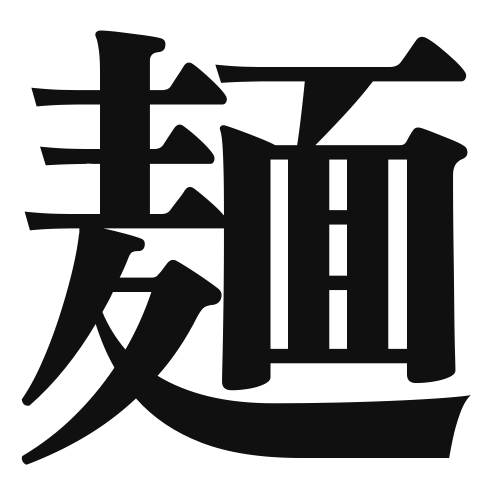1. Overview of Meaning
The kanji “麺” (men) refers to noodles, a staple food in many Asian cuisines, particularly in Japan. It encompasses various types of noodles, including ramen, udon, and soba.
2. Formation and Radicals
Formation of the Kanji: The kanji “麺” is a phonetic-ideographic character (形声文字). It combines the radical for “wheat” (小麦) with a phonetic component that suggests its pronunciation.
Radical: The radical for “麺” is “麥” (barley or wheat), which indicates its connection to grain products.
3. Examples of Usage
Common Words and Phrases: Some frequently used terms include “ラーメン” (ramen), “うどん” (udon), and “そば” (soba).
Example Sentences in Daily Conversation:
- 「今晩はラーメンを食べたいです。」(I want to eat ramen tonight.)
- 「このうどんはとても美味しいです。」(This udon is very delicious.)
4. Synonyms and Antonyms
Similar Kanji: The kanji “面” (men) also relates to food, meaning “surface” or “face,” but it does not specifically refer to noodles.
Antonyms: There are no direct antonyms for “麺,” but one could consider “ご飯” (gohan), meaning “rice,” as a contrasting staple food in Japanese cuisine.
5. Cultural and Historical Background
Connection to Japanese Culture: Noodles play a significant role in Japanese cuisine, often enjoyed in various forms during festivals and celebrations.
Proverbs and Idioms: One common saying is “麺は心の食べ物” (Noodles are food for the heart), highlighting their comforting nature in Japanese culture.
